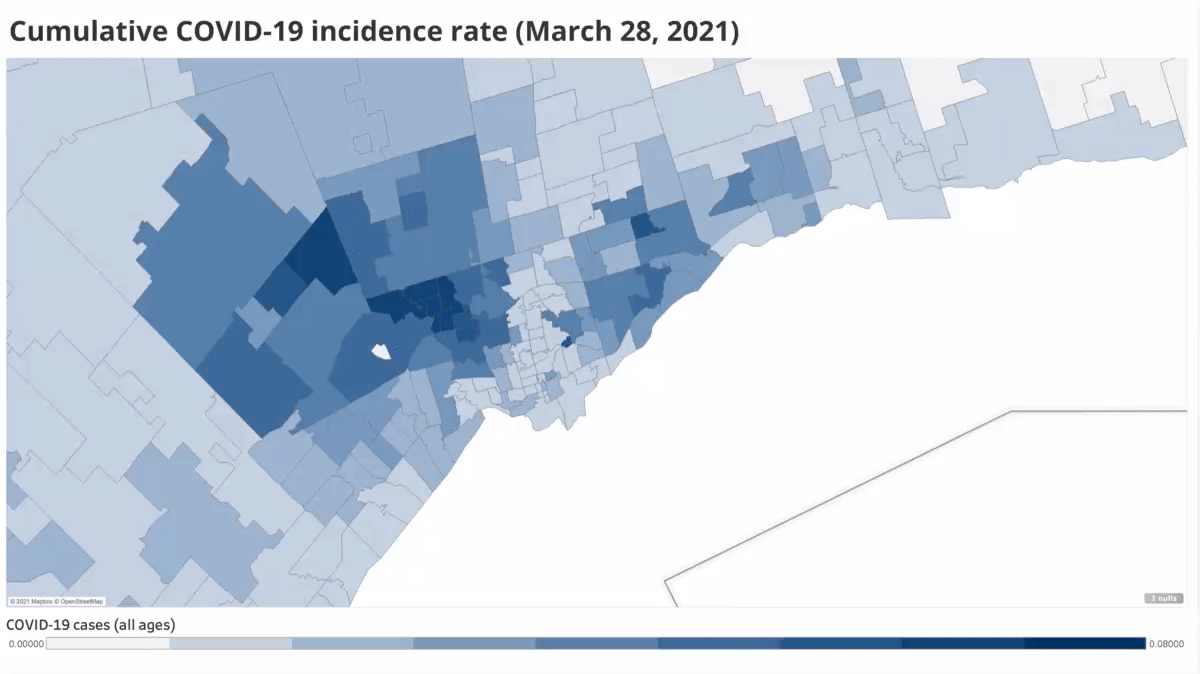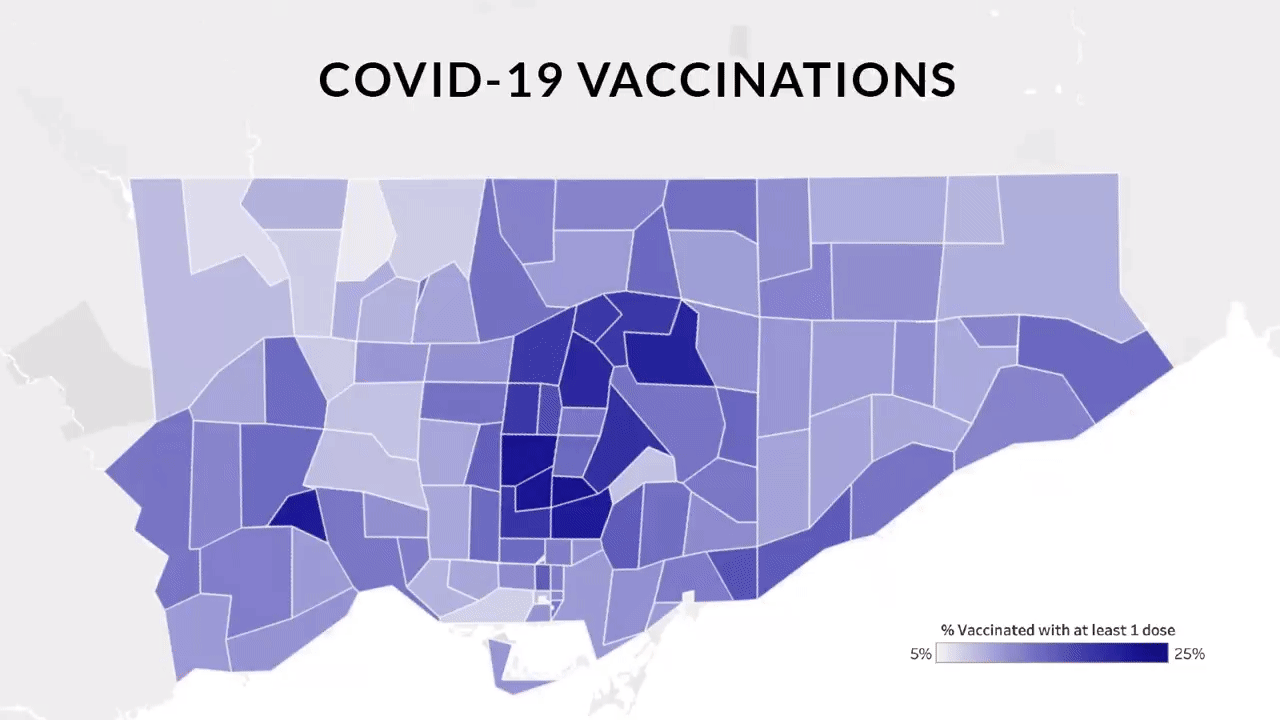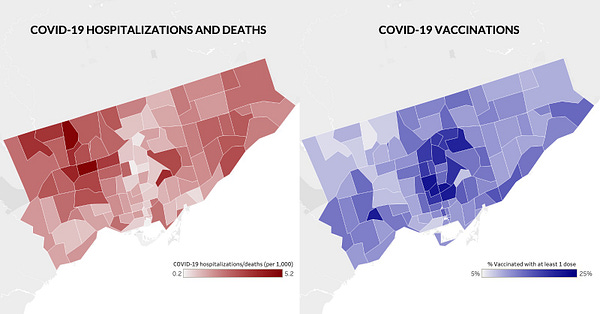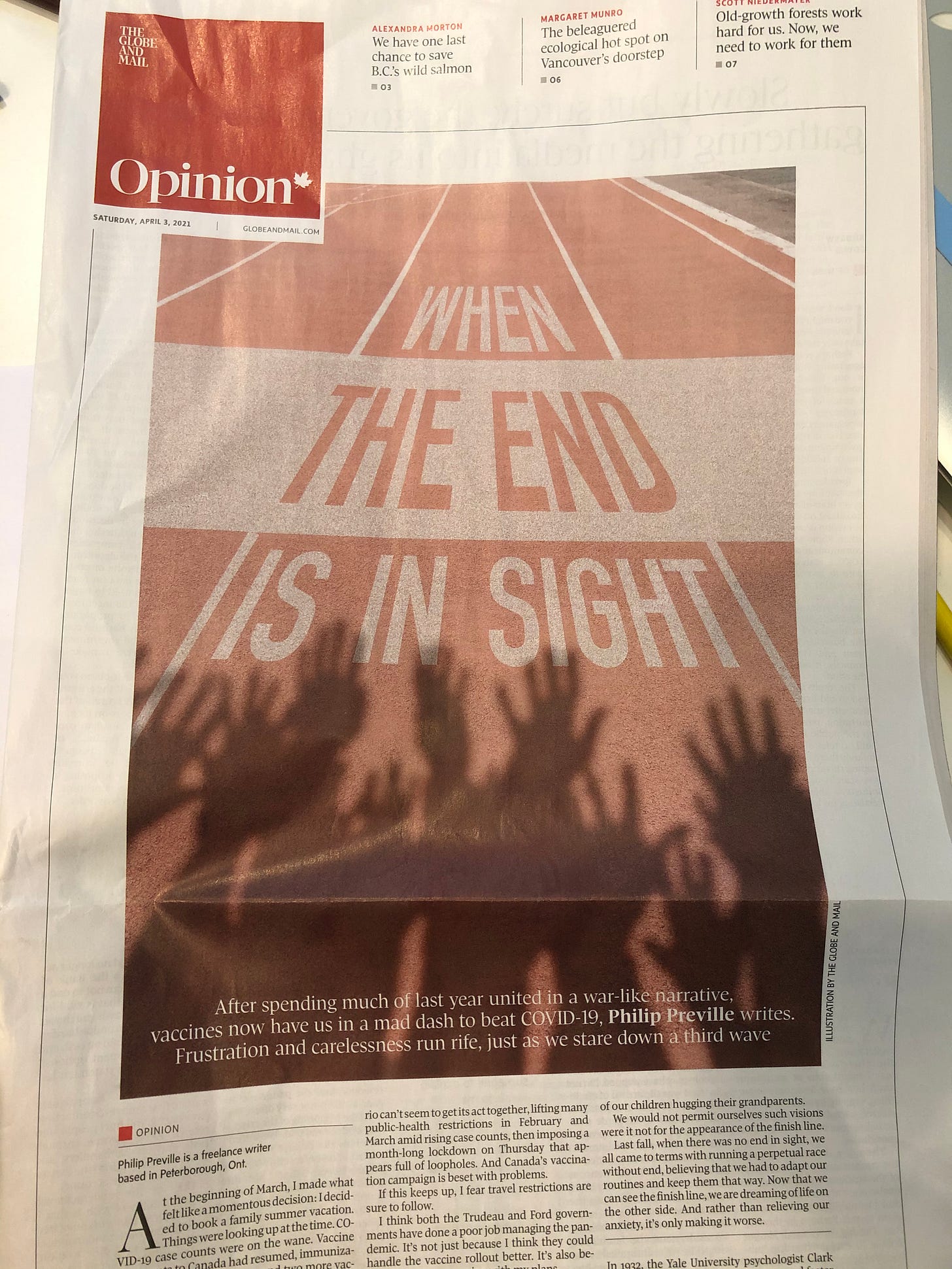Welcome to At The End Of the Day. I’m Hannah Sung and I write this newsletter for a people-first perspective on the news.
A lot happened this week in Ontario, where we, like many other places in the world, are experiencing a third wave of Covid.
For me, this week was all about postal codes.
These maps, based on new data from a research group called ICES, showed who is getting Covid versus who is getting vaccines. It was so stark, so visual and so real, it hurt.



What your postal code says about you
If you don’t live in Toronto, neighbourhood names like Rosedale or Jane and Finch won’t mean anything to you. But for those of us who do, this list has major impact.
At the top, the land of circular driveways and topiaries and at the bottom, an underserved Toronto neighbourhood -- racialized communities, low-income, consistently battling negative media attention and one of the hardest-hit by Covid.
Throughout this pandemic, I’ve wondered would have happened to my family had Covid struck when I was a kid. I grew up in a Scarborough neighbourhood that is, according to Statistics Canada, 90% “visible minority” (that’s a StatsCan term, not mine -- how can 90% be the “minority?”).
My small-business owning immigrant parents (convenience store, grocery, video rental, in that order) would have been crushed financially by Covid. Without paid sick days as mandated by the government, they would have chosen to work outside the home (because guess what -- it’s not a real choice!).
I would have been the family information-seeker, the person to book vaccines online, from the age of 8, 9 or 10. I think about that a lot.

Today, I’m not in a vulnerable population. And yet, I’m literally the same person I was thirty years ago. I just live in a different neighbourhood, a simple move that actually reflects a myriad of differences.
That’s why this postal codes data from ICES was so gripping to me.
I called up Nick Hune-Brown of The Local, a magazine on urban health and social issues in Toronto. He used these maps from ICES in his reporting this week.1
I asked Nick whether this is specifically a Toronto story.
“No, not at all. There’s almost identical maps of Chicago, Washington D.C., New York. It’s not just a Toronto problem at all,” he said.
That’s because when we talk about postal codes, what we’re really talking about are social determinants of health.
Systemic barriers are often invisible. But maps like these? This is about as visual a representation of systemic discrimination you can get. They’re proof for anyone who might still stubbornly believe, as our own Premier of Ontario often suggests, that the spread of this virus is propelled solely by personal choices. It’s not.


Here’s Nick again:
What’s crazy is how clear and consistent it has been from the beginning. A year ago, they started releasing neighbourhood-specific data and even before that you could’ve guessed, but it became very clear that pockets in the northwest and Scarborough, places with a lot of racialized people, with a lot of immigrants and low-income people, those were the places that were being most affected, right? The essential workers.
Did these numbers surprise him?
They actually were a little surprising in that they were so bang on. Like, there were no outliers. The very worst-hit neighbourhoods had the fewest vaccines, the most well-off neighbourhoods had the highest vaccination numbers, like almost a joke, you know? We've seen the same patterns throughout the entire pandemic. There's big systemic barriers for people in these neighbourhoods, and we've done nowhere near enough to help people overcome them.
What could have been done
💉 Targeting hotspots
This is happening now. It should have happened sooner. But I’ll take any positive development as good news.
🧪 Mobile vaccination clinics
Bring the vaccines to the people who need them most. It’s not a new idea. Here’s a story from The Local on a mobile clinic program that goes back to the early 80s, specifically to help immigrant women with sexual and reproductive health. Why couldn’t these efforts have been planned and implemented to be ready for our vaccine supply?2
📞 Better, centralized booking
I mean, imagine it was this chaotic every time you wanted to vote?
Many recommendations have been made by medical experts and while some of them eventually go through, it’s also the speed (or lack thereof) with which they get traction that has been so frustrating.


What you can do now
Talk to your neighbours. My elderly neighbours are scheduled to get their vaccines today (yes!). These conversations matter.
Here’s Nick on how conversations do work:
I’ve spoken to mobile vaccine teams who have gone to various communities. And by going beforehand and laying the groundwork and answering questions, they don’t get many people closing the door in their face.
Information needs to be accessible and come from someone trusted.
At the end of our conversation (during which I yielded multiple interruptions from my kids but c’est la vie), Nick made sure to emphasize that these maps aren’t about blaming people — they’re about fixing policy.
“I’m not listing most-vaccinated neighbourhoods to shame people. As soon as vaccinations are open in your neighbourhood, you should be getting vaccinated,” Nick laughed. “It’s great that people in Rosedale are getting vaccinated. It’s just that those opportunities should be available to the people at the other end of that list.”
One last note on framing the pandemic
There’s been a lot of resentment around perceived queue-jumping. It’s human nature to start to blame and shame during a pandemic, as medical anthropologist Madeleine Mant told me a few weeks ago.
Well, when I read this story about how we are framing this pandemic, I was captivated.
Finish-line anxiety is now the defining feature of pandemic life, The Globe and Mail 3
As journalist Philip Preville wrote, in earlier days of the pandemic, we used war terminology and were “all in it together.” These days, we use “race to the finish line” terminology, and psychologists say this type of framing makes us think more individualistically.
I suggest this as a great read if you haven’t already. And while I didn’t love the war analogies of last year, I’m definitely trying to keep the collectivist mindset alive.
Thanks for reading, visit me on Instagram where I’d love to know about the small pleasures that are getting you through (for me — daily tea time and Money Heist, a Spanish heist-slash-soap opera show that is right up my alley).
Take care,
Hannah
✨✨✨ At The End Of the Day is edited by continual lifesaver Ishani Nath ✨✨✨
It’s common to think that people choose their neighbourhoods but it’s money that buys choice.
- From “Mapping our Divisions,” The Local, May 2019
FURTHER READING
Peel Region medical officer of health ordering schools to close for 2 weeks due to COVID-19, Global News. Oh yeah, the kids are home again. Instead of letting educators and families plan, the provincial government lobbed off this necessary decision onto individual medical officers of health.
The province offered 5,000 vaccines to reopen shuttered Amazon warehouse. Here’s why Peel’s medical officer declined, Toronto Star
My takeaway from this is how important it is to have the right provincial framework.
Speaking of the Ontario provincial framework:
By @matttomic on Twitter 4
Come on, you read to the bottom. I think you deserve this laugh.
Health on Wheels, The Local, May 2018
Finish-line anxiety is now the defining feature of pandemic life, The Globe and Mail









